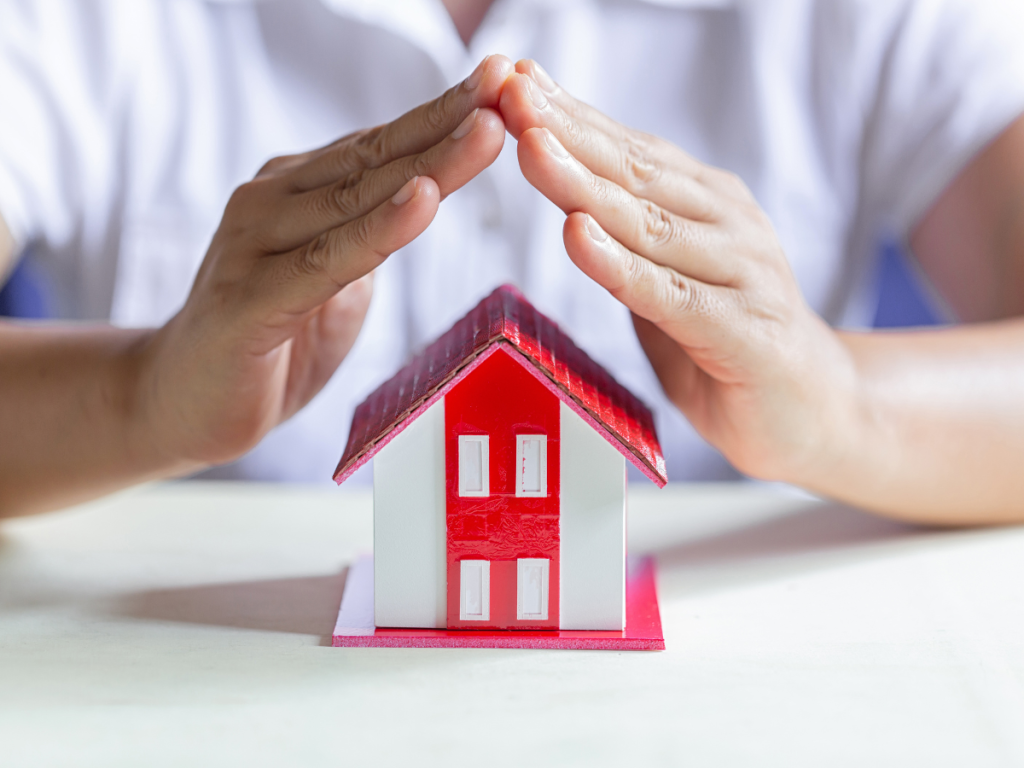Introduction
Natural disasters such as hurricanes, earthquakes, floods, and wildfires can cause catastrophic damage to homes, and the financial burden of these disasters can be overwhelming. While homeowners’ insurance is essential for protecting your property, standard policies may not cover damage caused by certain natural events. It is important to ensure that your home insurance covers these risks in order to fully protect and provide peace of mind. This guide will take you through how to ensure your home insurance includes coverage for natural disasters.
1. Know the Various Types of Natural Disasters
Each natural disaster is different, and not all are covered under a standard homeowners’ insurance policy. So, knowing which natural events might impact your region can help you determine what type of coverage you need. Here are some common natural disasters and what you might want to consider regarding coverage:
- Floods: Flooding is one of the most common and destructive types of natural disasters. However, most home insurance policies do not cover flood damage, even if the flood is caused by a weather-related event such as a heavy rainstorm. Flood insurance is usually an additional policy or add-on and is highly recommended for homeowners in areas prone to flooding. Additionally, the cost of flood insurance will vary greatly depending on the location and the risk of flooding in your area.
- Earthquakes: Earthquakes can damage your home’s structure, causing cracks in the foundation, collapsed walls, and displaced roofing. Typically, earthquake insurance is not included in a standard homeowners policy, so you would have to purchase a separate policy if you reside in an area that experiences earthquakes. You should also understand the policy’s details, such as the deductible and the scope of personal property coverage.
- Hurricanes: The strong winds associated with hurricanes can cause extreme destruction, while the torrential rain and storm surge can even drown homes. Homeowners’ insurance typically includes wind damage, but may not include damages from floodwaters. Certain areas devastated by hurricanes will require special windstorm coverage or separate flood insurance. Ask your provider if these are automatically included or must be added.
- Wildfires: In areas susceptible to wildfires, it’s critical to review your insurance policy’s coverage for fire-related damages. While most homeowners’ policies cover fire damage, there may be limitations on the coverage for wildfires, especially if the risk is high. This might require additional fire insurance or higher policy limits to ensure complete protection. Wildfires can damage entire neighborhoods, making it important to protect your home from both structural damage and damage to personal belongings.
- Tornadoes: Tornadoes can cause extensive wind damage, ripping roofs from houses and tearing up trees. Like hurricanes, tornadoes are generally considered windstorm coverage, but you should ensure that the coverage limit is sufficient to cover the full extent of potential damages.
- Landslides and Mudslides: Landslides and mudslides are typically not covered by standard homeowners’ insurance policies. In some cases, additional coverage for land movement may be required, especially if your property is on a steep slope or in a region known for landslide risks.
2. Review Your Current Insurance Policy Thoroughly
The first step in ensuring your home insurance covers natural disasters is to thoroughly review your existing policy. Homeowners’ insurance policies can be complex, and the terms and exclusions may vary from one insurer to another. Look specifically for clauses related to natural disasters, including which perils are covered and which ones are excluded.
- Exclusions and Limitations: Know what your policy specifically excludes. There are policies that will only offer minimal coverage in specific events while there are others which exclude the entire event. Standard coverage will normally not include floods, earthquakes, landslides, and other catastrophes so you should actively get the necessary add-ons or purchase separate policies for these cases.
- Replacement Cost vs. Actual Cash Value: Note whether your policy covers your home for replacement cost or actual cash value. Replacement cost will cover the full expense of repairing or rebuilding your home, whereas actual cash value considers depreciation, leaving you with a payout that could be significantly less than what you would need to repair or rebuild after a disaster. Generally, replacement cost coverage is better for natural disaster protection.
- Dwelling and Personal Property Coverage: Both your dwelling and personal property should be adequately covered. In case a disaster destroys the structure of your home or damages your personal belongings, the policy should cover enough to repair or replace everything. Check your limits of coverage to ensure that it matches the full value of your home and possessions.
3. Add Specialized Coverage if Needed
If the standard homeowners’ insurance you buy does not include coverage for a particular type of natural disaster, you may add specialized coverage to your policy. Here’s how you can tailor your policy to specific risks:
Flood insurance is very necessary if you reside in a flood-prone region or in proximity to water bodies. It may be bought under the National Flood Insurance Program, or one may purchase it through private insurance providers. This can cover both structural damage to the house and personal belongings like furniture, electronics, and personal belongings within the house.
- Earthquake Insurance: This add-on is especially important if you live in an area with frequent seismic activity. Earthquake insurance typically covers the cost of repairing structural damage caused by shaking and can help with additional living expenses if you need to temporarily relocate due to severe damage.
- Windstorm and Hurricane Insurance: This is very important in areas prone to hurricanes or tornadoes. Windstorm insurance protects your house from windstorms, which could damage the roof and windows. If you reside in an area that is usually hit by hurricanes, you also need to check on the flood conditions of your policy.
- Wildfire Insurance: If you live in a fire-prone area, you might need extra wildfire coverage, depending on the wildfire risk zone in which you live. Most standard fire insurance policies cover fire damage, but if you live in an area that is prone to wildfires, you would want to consider more comprehensive coverage for structural damage and loss of personal property.
4. Know Policy Limits and Deductibles
Once you confirm that you have natural disaster coverage, review the limits and deductibles on your policy. Most insurance policies will have a limit on the amount they pay for certain types of damage.
- Policy Limits: The policy limits determine the maximum your insurance company will pay to rebuild or repair your home if a natural disaster occurs. This means that in case the total cost of repairing or rebuilding your home exceeds those limits, you will have to incur the remaining expenses. You need to ensure the policy limits are high enough to cover the full cost of repairs, especially when a disaster occurs.
- Deductibles: A deductible is the amount you need to pay on your own before your insurance policy covers expenses. In cases of natural disasters, such as hurricanes, earthquakes, and floods, the deductible may be higher than the common homeowners’ deductible. Check your policy to understand the general deductible terms and if it varies between natural disaster types. Some policies also apply a special higher deductible for certain natural disasters.
5. Review the Cost of Rebuilding and Additional Living Expenses
In the aftermath of a natural disaster, the cost of rebuilding your home may far exceed the value of your property. Make sure that your policy covers the full rebuilding costs, including any upgrades required by local building codes, and that it offers sufficient coverage for additional living expenses.
- Rebuilding Costs: Standard homeowners’ insurance generally covers the cost of repairing or rebuilding your home after a covered event. However, should your home be severely damaged or destroyed, you may require extra coverage in case rebuilding costs escalate due to factors like an increase in construction materials and labor, as well as rebuilding in line with current codes.
- Expenses for Living elsewhere: If the natural disaster causes your home to be uninhabitable, it should cover additional living expenses such as renting an apartment or staying at a hotel. Check if it is included in the policy and confirm that the coverage would be enough until your home could be rebuilt.
6. Monitor Local Laws and Regulations
The risks and regulations related to natural disasters may evolve over time as a result of climate change, new building codes, or changing environmental conditions. You should also be aware of the local law and insurance requirements, especially in regions prone to certain types of disasters. Your local government can update building codes, impose new regulations on fire safety, or mandate flood control measures. Make sure your policy is in compliance with any new laws and change your coverage appropriately.
7. Consult with an Insurance Agent or Broker
An experienced insurance agent or broker is your best ally in making sure that your home is fully protected. They can help you assess the specific risks at home and guide you as you select proper coverage. Finally, an expert can help you understand the fine print of your policy and then assist you in adding endorsements or supplementary coverage when necessary.
8. Review and update your insurance coverage regularly
Natural disaster risks can change over time, and so can your insurance needs. For instance, your neighborhood may become more prone to wildfires due to climate change, or new flood zones may be designated in your area. It is essential to review your insurance coverage regularly and update it as needed to ensure that it still provides adequate protection against the natural disasters that are most relevant to your situation.
Conclusion
Natural disasters are always unpredictable and may cause immense damage to homes and communities. For your home insurance to be effective in the event of a disaster, it is necessary to understand coverage gaps in your current policy and take proactive steps to add the necessary coverage. Review your policy; know the precise natural disaster risk you are prone to; add riders or take separate policies-all this will surely ensure that the unexpected is provided for in keeping your home and its belongings intact. Don’t wait until when disaster knocks-and strikes, make the necessary efforts now to secure your home’s adequacy over natural disasters so as to invest and be sound-minded.

